
<< Back | Home | Site Map
Origin of name: Aboriginal - emu
Station opened: 11-4-1924
Station closed: 9-12-1988
Distance from Melbourne (via Castlemaine): 377 miles 79 chains 2 links; 508.312 km
Height above Sea Level: 211 feet
Werrimull was opened for goods traffic during construction of the line on 18-12-1923.
When officially opened, Werrimull was the terminus of the line from Red Cliffs until the extension to Meringur was opened on 30-10-1925. A 250 foot low level passenger platform with a 10 x 12 office (Type "A" station building) with 600 gallon water tank, 10 x 12 waiting room, 12 x 12 ladies "yard", and 12 x 10 van goods shed was provided. A crossing loop and loop goods siding with a 25 x 16 foot goods platform and temporary sheep loading race were provided at the time of opening. A departmental residence was located in the station grounds. A ganger's tool shed was also provided for the track gang based at Werrimull but officially called the Bambill gang.
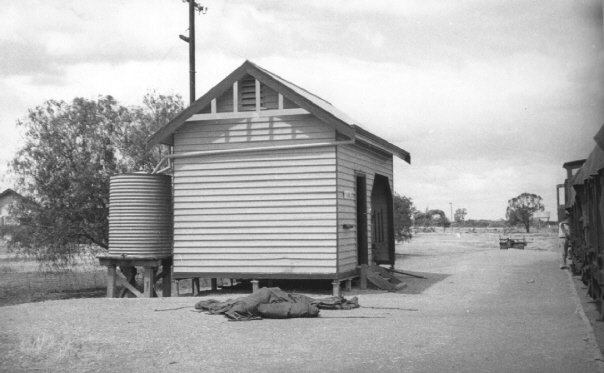
A goods train for Morkalla pauses at Werrimull. Note the departmental residence to the far left, the ganger's trolley at the end of the platform and the neat, well used appearance of the station platform. 1955. Photo: Des. Jowett
Chief Commissioner Clapp and his inspection party were met by a deputation of residents at Werrimull on 22-8-1925. Requests for extension of the goods platform, erection of trucking yards for cattle, installation of a goods crane and the appointment of a stationmaster or porter were made. In October 1925 the Commissioners authorised a cattle ramp with the sheep race. It appears that this was achieved providing a discharging ramp about 6 feet wide at the down side of the existing sheep race with a gate leading into the sheep yard. The department did not consider that the quantity and class of goods warranted the provision of a crane.
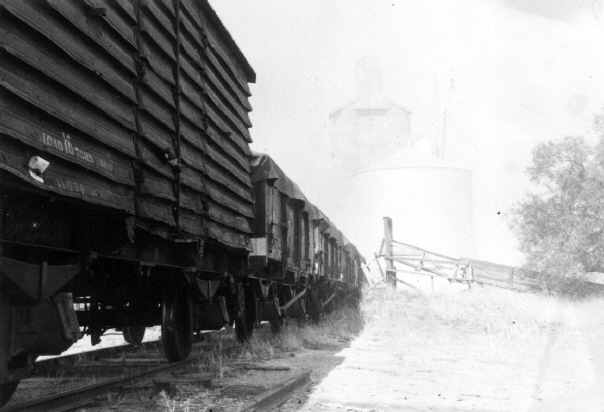
The stock race at Werrimull during a dust storm. March 1969. Photo: Don Turvey
A new type of platform trolley was given a trial at Werrimull in November 1925. The trolley, built to a similar design obtained from the Southern Pacific Railway, U.S.A., was the idea of the Chief Commissioner, Mr. Harold Clapp. Its purpose was to provide a means of unloading goods from vans at the low level platform. The trolley was about the same height as the van floor on four large steel wheels and the table was 11 feet long and 4.5 feet wide. Seventeen platform trollies were constructed at Newport Workshops with the first being sent to Werrimull. Six were provided on the Mildura/Meringur lines at Nowingi, Pirlta, Merrinee, Karawinna, Werrimull, Meringur (and eleven in the Bendigo district (most likely Balranald line).
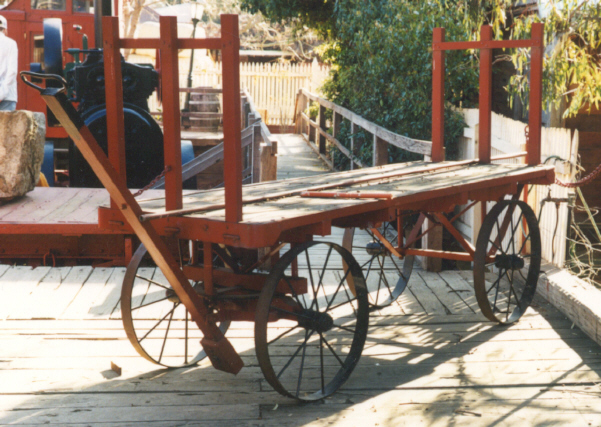
High platform trolley introduced by Chief Commissioner Clapp in 1925 for transferring van goods at stations where low level platforms were provided. The trolley was built at Newport Workshops to a similar design obtained from the Southern Pacific Railway, U.S.A.. This trolley is preserved at Echuca and was possibly obtained from a station on the Balranald line. Photo: Chris. Wurr
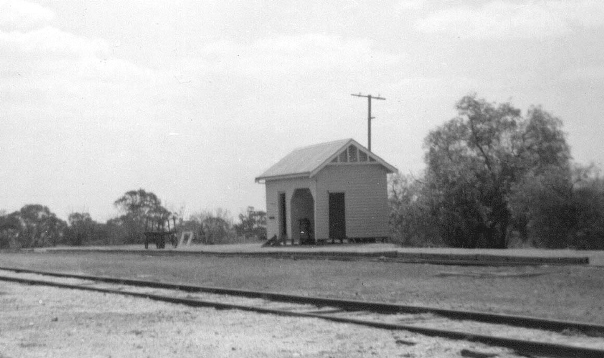
Werrimull station 1967. Note the high level trolley introduced by Chief Commissioner Clapp in 1925 for unloading van goods. Photo: Bruce McLean
A large galvanised store was located in the station ground on land leased to the Melbourne Timber and Trading Co.
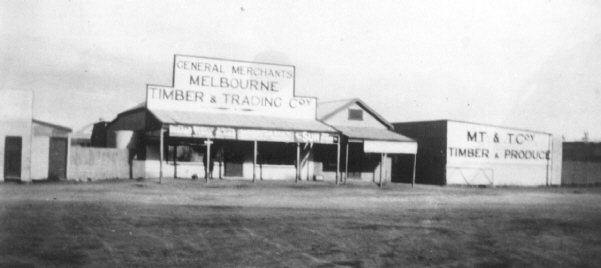
The Melbourne Timber and Trading Co. premises at Werrimull. Circa 1930. Photo: Courtesy Margaret Kelly
A water tank on a stand was provided at the up end for steam locomotives with the opening of the line.
In 1938 a request for sheep trucking yards was made. Sheep yards, a discharge ramp and water trough was provided with work completed on 17-10-1938.
A concrete 65,000 bushel grain elevator was constructed by the Grain Elevators Board in 1939.
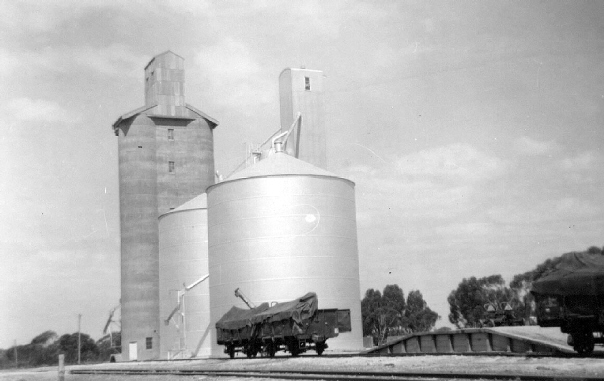
Werrimull silos and loading bank. 1967. Photo: Bruce McLean
A caretaker was provided. Records show that Mrs. Cornell was appointed in 1943.
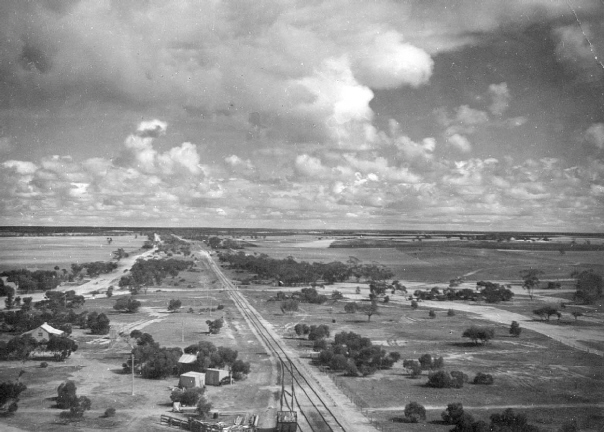
Looking westward from the top of the Werrimull silo. Photo: Wilf Henty, courtesy John Kiely
No.2 road was removed on 10-3-1953.
The Victorian Wheat and Woolgrower's Association, Werrimull Branch, requested the Victorian Railways to have No.2 road reinstalled to help overcome congestion during the 1960/61 wheat harvest. It was reported that the harvest had an overflow of 499 wagons of these 477 wagons were loaded and despatched between 3-12-1960 and 29-1-1961 "which compares more than favourable with other locations" and made possible by scheduling up to 13 special trains per week. The Commissioners did not agree to the suggestion.
The Werrimull Branch of the Country Party requested Mr. M. Whiting M.L.A. to ask the Minister for Transport to approve an extension of the loop siding following the 1963 harvest. The siding was not of sufficient length to handle the number of trucks required to shift the harvest. A response was received from the Minister (Mr. R. Meagher) in May 1964 indicating that the Railway Commissioners were of the view that an extension was not warranted. Any siding congestion at Werrimull was relieved by taking loaded wagons to Bambill on the outward journey, thus permitting additional empty vehicles to be placed by "down" trains. The Minister also indicated that the Grain Elevators Board proposed to build an additional 135,000 bushel capacity silo before the next grain harvest.
Two steel bins were provided by 1967 and a 230,000 bushel Horizontal Grain Storage was provided in 1967.
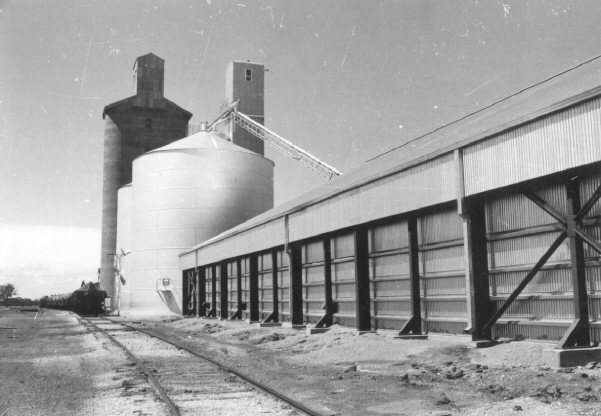
Concrete and steel silos standing with Horizontal storage shed at Werrimull 1967. Photo: Sunraysia Daily
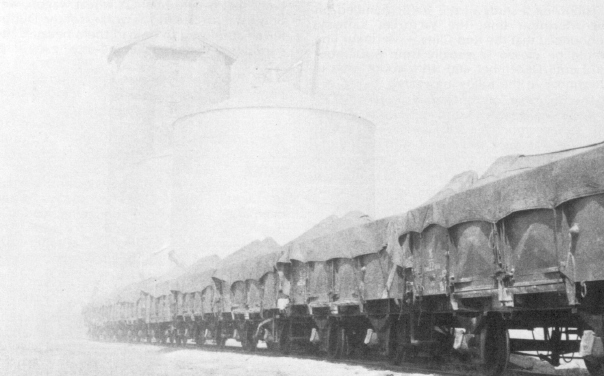
A dust storm envelopes the silos at Werrimull in March 1967. Photo: Don Turvey
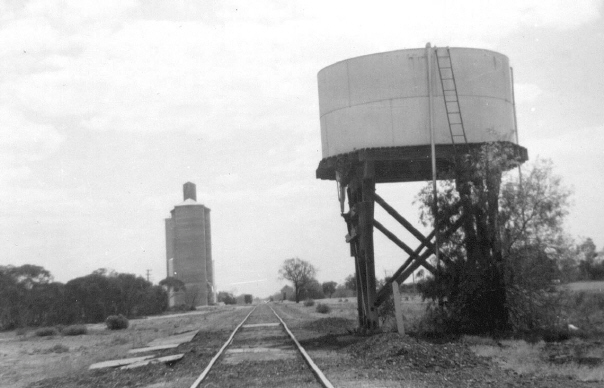
The water tank stand at the up end of Werrimull station reserve. 1967. Flat steel plates were located between the rails to protect the sleepers from burning when ash was dropped from steam locomotives. This method sufficed for the traditional sunken pit. The steam era had recently ended, however, and some of the steel plates have been set aside. The tank was removed shortly after the photo was taken. Photo: Bruce McLean
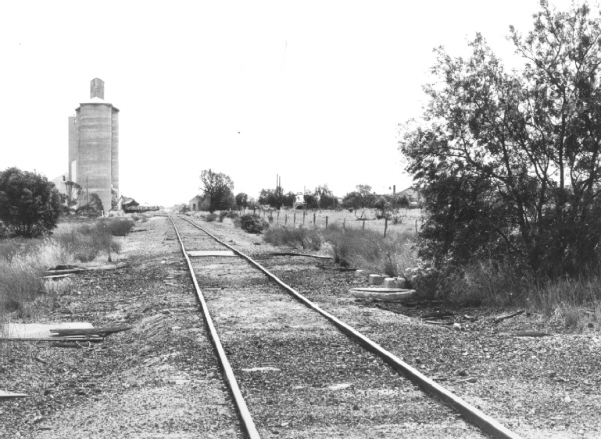
The same site following removal of the water tank. 2-12-1973. Photo: Bruce McLean
The Railway Telephone was abolished by 3-6-1969.
The sheep race was abolished by June 1971.
On 31-7-1973 tenders were invited for the sale and removal of departmental residence No. 2690.
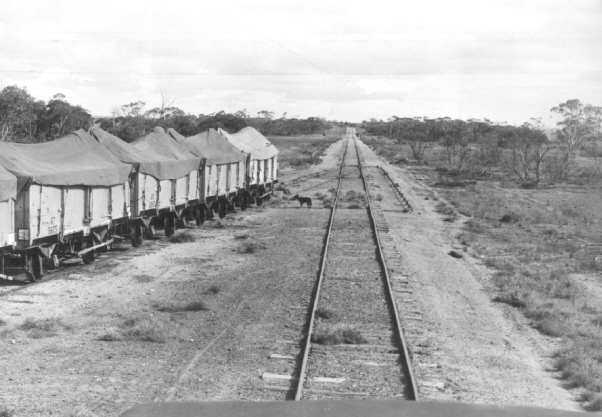
A train driver's view of the down end of Werrimull from the cabin of diesel-electric locomotive T371 on 23-7-1977. Photo: Bruce McLean
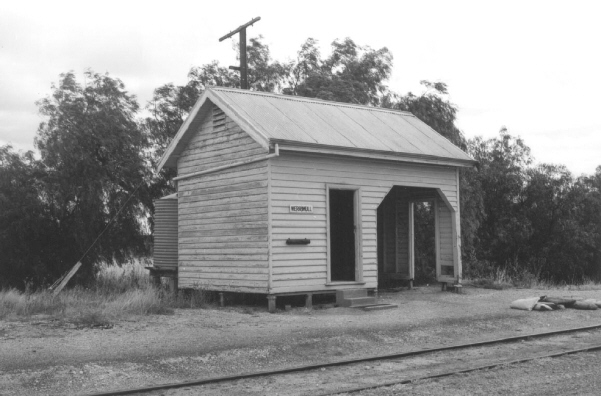
Werrimull station in 1974. The building was sold shortly afterwards to Mr. & Mrs. K. Kelly, who moved the building on to their property at Karween. The building was subsequently moved to the Meringur Pioneer Village where it has been restored. Photo: Victorian Railways PR-8381
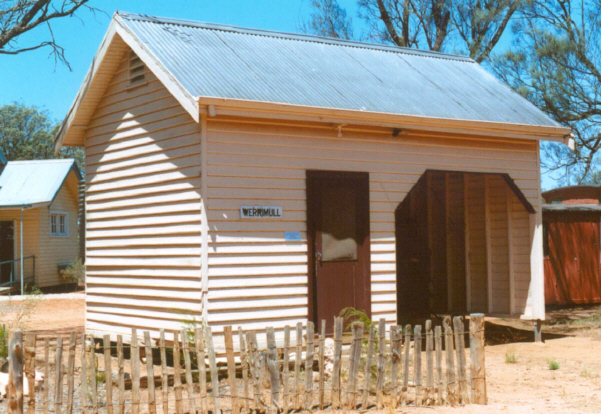
Werrimull station is now located at the Meringur Pioneer Museum where it has been restored. A former Victorian Railways C Class brakevan can be noted in the right background. 27-1-2001. Photo: Bruce McLean
A radio communication repeater tower was installed at the station in early 1984.
Werrimull closed with the line on 9-12-1988.
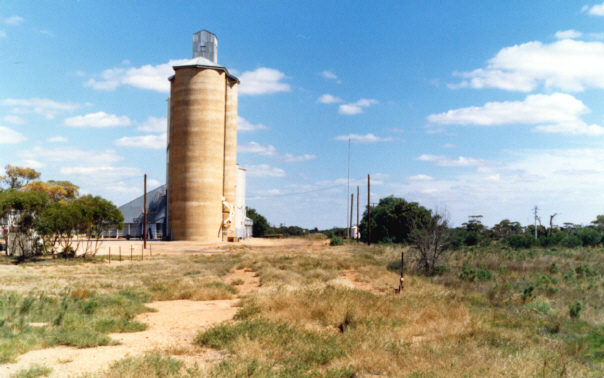
Werrimull on 9-4-1989 after the official closure of the Redcliffs to Meringur line some four months earlier. Note the overgrown state of the track and siding. Photo: Bruce McLean
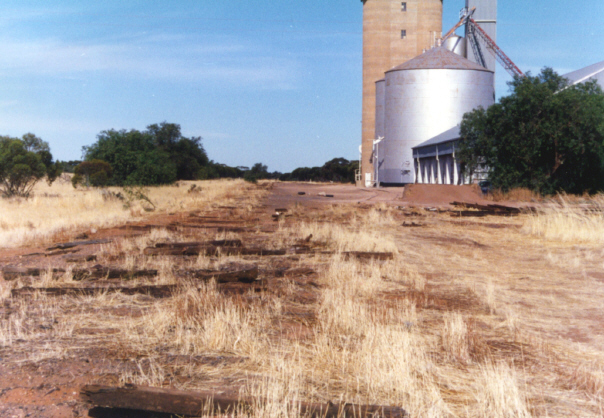
The sad sight of Werrimull following dismantling of the tracks. The rails left in the siding passing the silos were covered with gravel to enable road transports to access the silo discharge chutes. 27-12-1990. Photo: Russell Savage
On 27-4-1991, the Grain Elevator's Board advertised tenders for the purchase and removal of the 19 tonne weighbridge located in the Werrimull station ground.
| << Back | Home | Site Map | Copyright © 2003 Bruce McLean, All Rights Reserved |